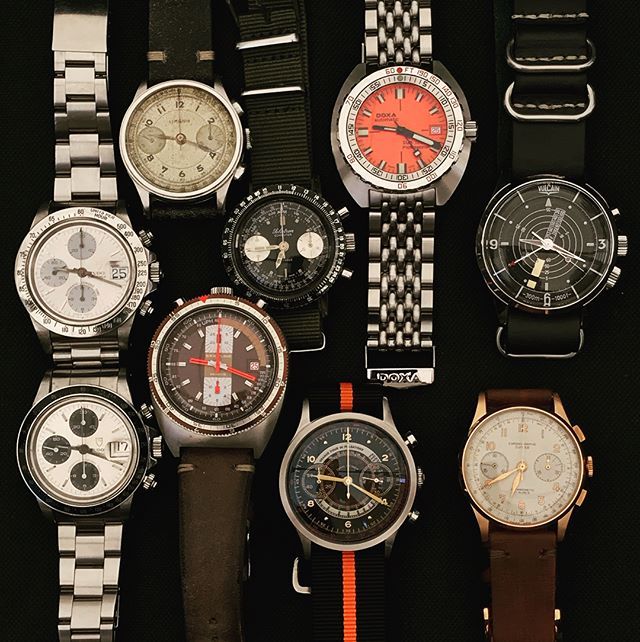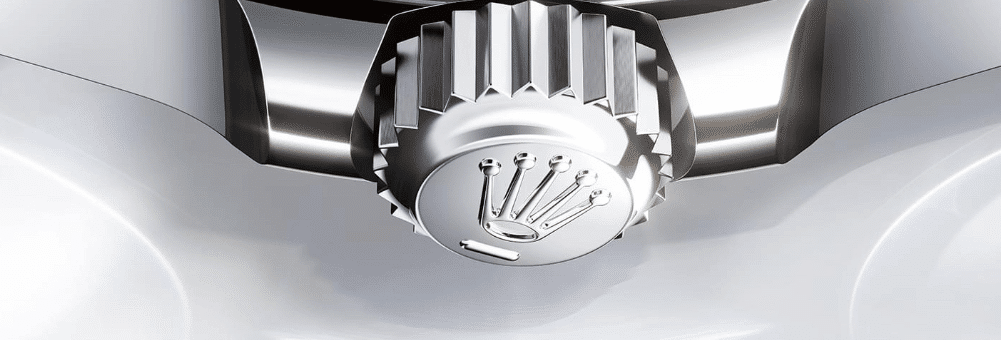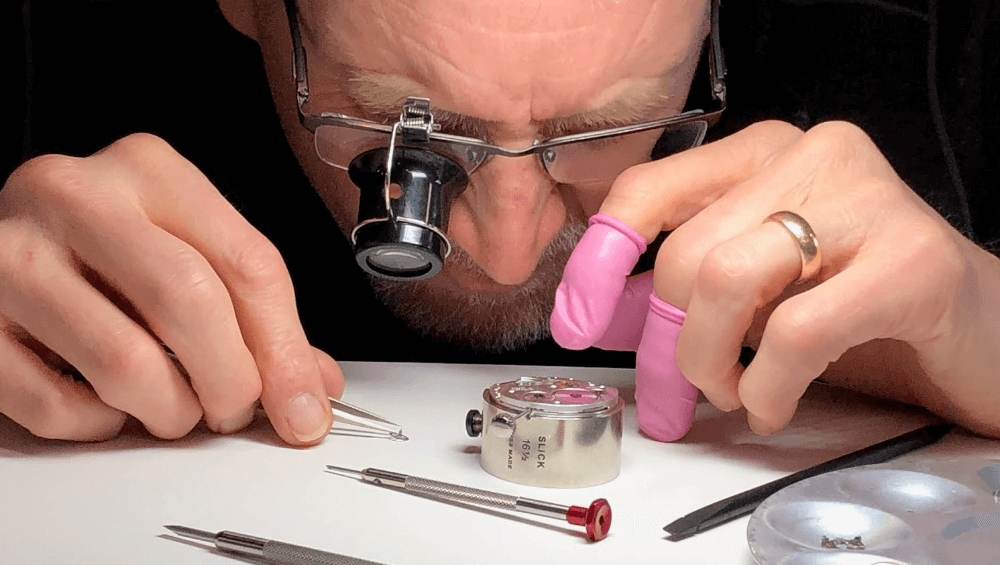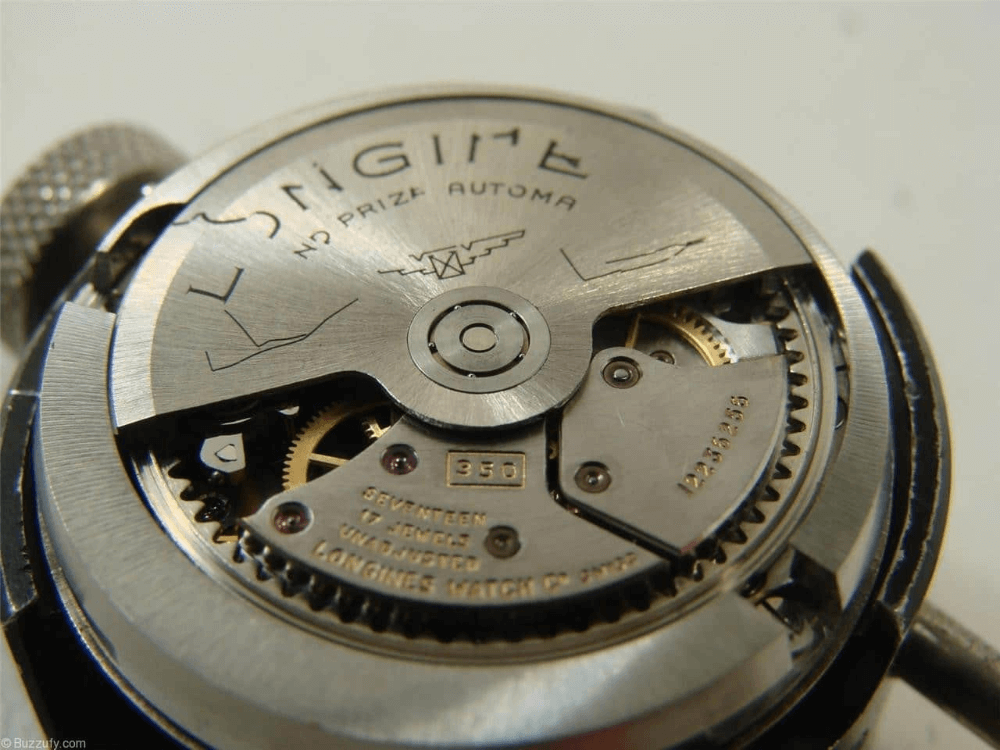Acrylic: This usually refers to the plastic crystals that were found on vintage pieces.
Adjusters: Some wristwatches have recesses on the side of the case to adjust the date or other functions with a special pointy instrument or a toothpick.
Adjustment: Most high-grade wristwatches may be adjusted or regulated by a watchmaker for better timekeeping.
Alarm: A complication on a wristwatch that allows the user to set an alarm sound generated by a tiny hammer that vibrates inside the case on mechanical pieces.
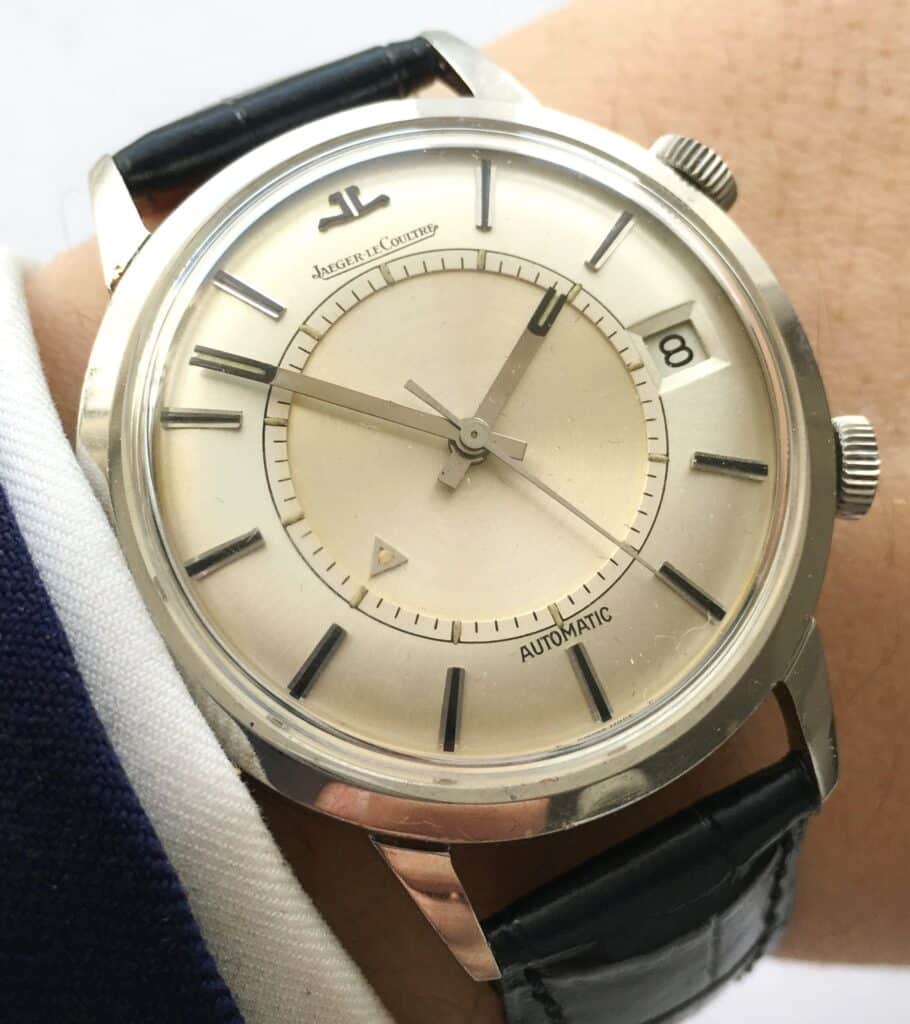
The LeCoultre Memovex alarm wristwatch is considered one of the most collectible vintage pieces on the market. The bottom crown controls the time and the upper one sets the mechanical alarm.
Amplitude: The maximum angle achieved by a swinging balance in the movement. This angle, measured in degrees is influenced by the available power from the Mainspring and the overall movement design and quality.
Analog: The term “analog” in horology refers to a wristwatch with hour and minute hands.
Antique: This refers to watches that are roughly 100 years or older (1920s or prior).
Aperture: AKA “Window” or an opening in the dial to reveal some information such as the day or date.
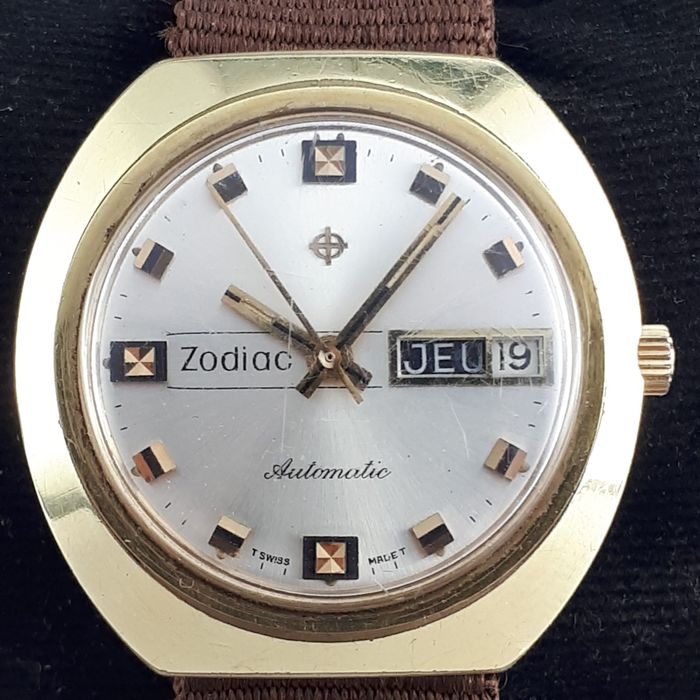
Arabic Numerals: Numerals on the dial (1,2,3, etc.).
Art Deco: A design style that flourished in the 1920s and 1930s. Art Deco wristwatches from the era are characterized by their rectangular cases and use of Arabic numerals and the geometric lines on the dials.
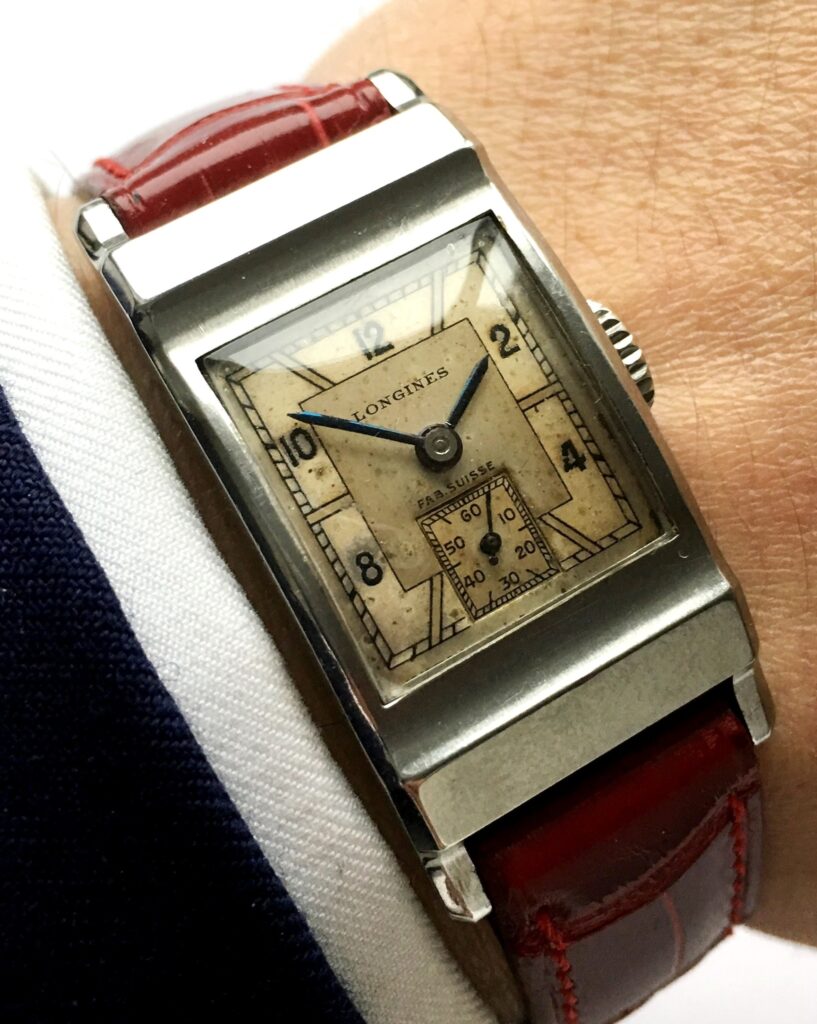
Asymmetrical Case: A wristwatch case that has unequal sides. The term can also be used for asymmetrical dial design.
ATM: An acronym for atmosphere, which is commonly found on vintage dive watches. Each atmosphere corresponds to 33 feet of saltwater.
Also refer to BAR.
Automatic Watch: (AKA self-winding) A mechanical timepiece that is powered by motion from the wearer’s wrist or an automatic winding machine (Automatic wristwatches can also be wound manually with the crown).
Automatic Winder: A specially designed box (or cabinet) that can wind an automatic wristwatch or multiple watches to keep them running when not worn.
Aviation Wristwatch: A design for use by pilots (or anyone who enjoys the style). These may include chronographs with rotatable bezels for flight management or other specialized designs, such as the Longines Lindbergh and Weems models.
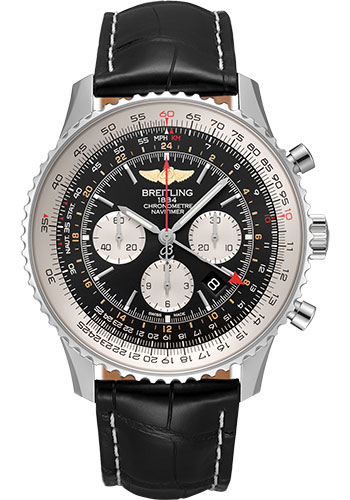
Balance: The circular mechanism with a hairspring that oscillates back and forth and transfers regulated power to the watch. These oscillations are measured in beats per hour (see BPH).
Banana case: A long rectangular case with a slight curve. Longines and others produced a number of Banana wristwatches in the Art Deco Era.
Band: The strap or bracelet that holds the watch to wrist.
BAR: A unit of pressure indicating one atmosphere, or equal to 33 feet/10 meters of water pressure. Some watches denote their water resistance with BARS, so 10 BARS would indicate water resistance to 330 feet/100 meters (some may calculate 330 feet as 11 BARS to adjust for ambient atmospheric pressure).
Barrel: The wheel-shaped barrel that houses the mainspring in the watch’s movement.
Beads of Rice Bracelet: The term given to Omega metal bracelets that resemble the design of the Rolex Jubilee bands.
Belt Watch: A watch that fits on the belt buckle.
Bezel: Most watches have bezels, which are metallic rims surrounding the crystal on the case. Many sport watches have rotating bezels that the wearer can turn to measure time or for other functions.
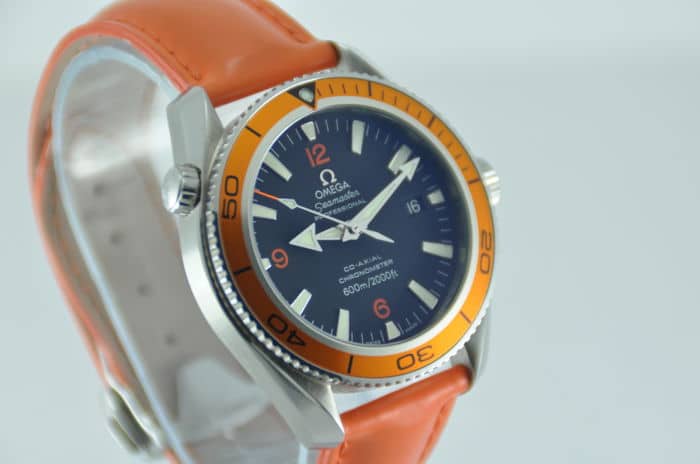
Bezel Insert: Many wristwatches have replaceable bezel inserts that can be replaced in case of damage or for other aesthetic reasons. The insert usually has a counter or chapter on it read elapsed minutes or secondary time zones.
Bi-Compax: A term to describe a chronograph having two sub-dials, one to show running seconds and the other to measure elapsed minutes (see also Tri-Compax). Many attribute the term Bi-Compax to the early models produced by Universal Watch Company.
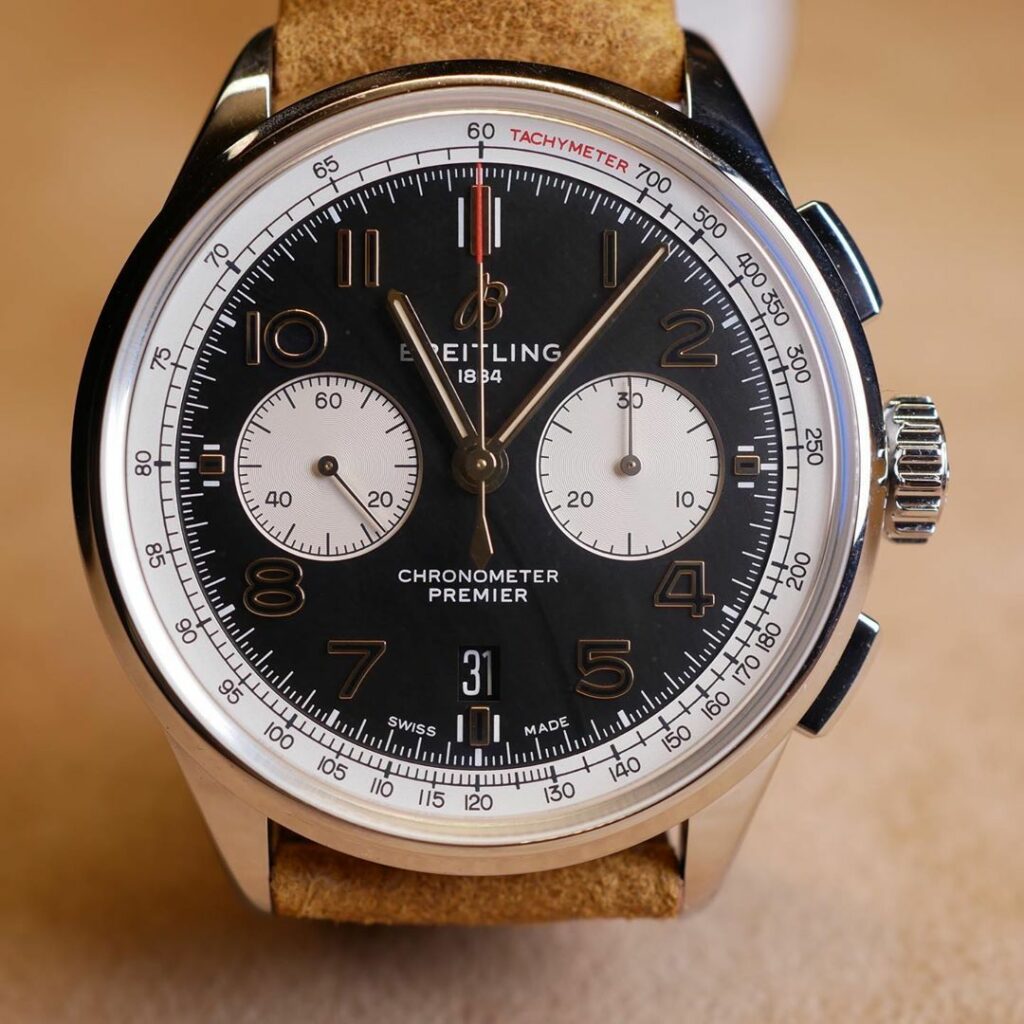
Bi-Directional Bezel: A bezel that can be turned both ways (see also Uni-directional bezel).
Blued Steel: Blue-steel hands and screws are generally regarded as high-quality and attractive alternatives to regular steel. The process of bluing steel includes heating it and treating it precisely to acquire the color.
BPH (bph): An acronym for beats per hour. This is the number of times that the balance oscilates back and forth in an hour. You can hear these beats through the case and they average 28,800 bph for most modern movements (eight beats per second).
Bracelet: Most people call a watch band that is made of metal (gold, steel, etc.) a bracelet.
Breguet Coil: A very common hairspring design with a sharply curved end that improves performance.
Breguet Hands: Originally designed by Abraham-Louis Breguet, one of the most accomplished watchmakers of all time, Breguet hands are distinguished by circles in the middle of the sharply pointed hour and minute hands.
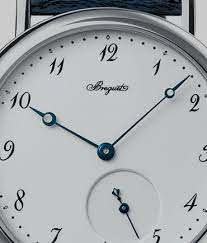
Bridge: Bridges hold integral parts of a wristwatch movement.
Bridge Movement: A very interesting and rare movement that fits on a single linear bridge.
Broad Arrow Hands: The term used to describe Omega bold hands on vintage and modern Speedmaster and Seamaster wristwatches.
Bubbleback: A term that applies to a very popular line of Rolex wristwatches from the middle of the 20th Century. Bubbleback models are distinguished by a bulging back case cover that was designed by Rolex to accommodate the automatic mechanism that was added to the original manual movements of the time.
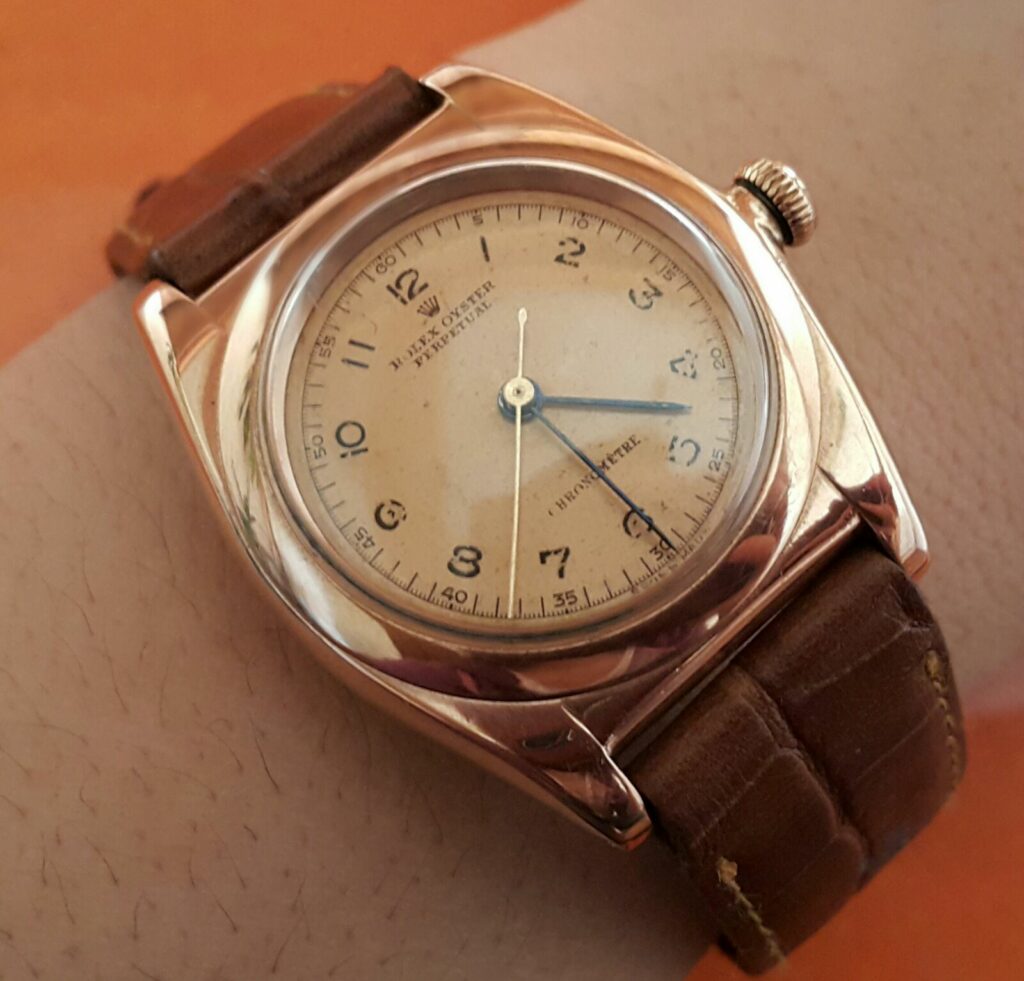
Calendar: A Calendar Watch is one that has at least the date information. Some models also offer additional day and month complications.
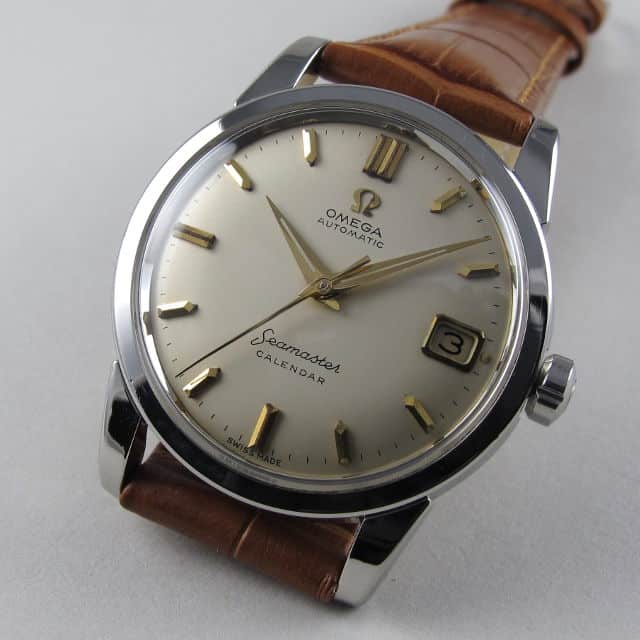
Caliber: Just as a reference denotes a wristwatch case model, a caliber denotes a movement’s “model” or series. Famous examples include the Omega 321 and 861 manual chronograph movements, the Rolex 3135 Automatic and the various Valjoux calibers that are still in use by dozens of brands today.
Case: The round, square or asymmetrical case that holds the movement, dial and crystal of the watch. Cases are generally made of metal, such as gold, steel, platinum or titanium. However many more materials are being used today to make cases, such as carbon fiber, ceramic and composite materials.
Case Back: The back cover that comes off to reveal the movement.
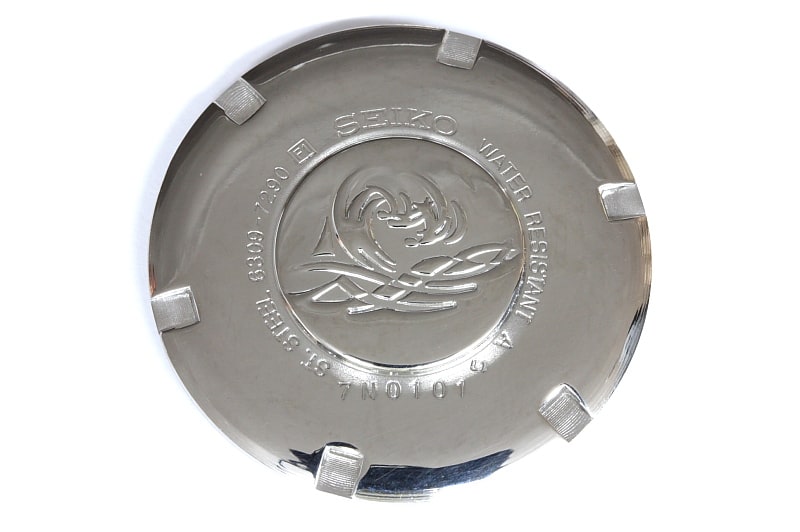
Case Size/Diameter: The width of a watch case as measured in millimeters without the crown usually.
Central Seconds: This term refers to a large running seconds hand on the dial as opposed to a smaller on in a sub-dial.
Cerachrom: The name given by Rolex to their new ceramic bezels, which are very tough and scratch resistant.
Chapter Ring: The outer track around the dial that has the minute and second markers.
Chronograph: From the Greek “timer writer,” a chronograph is a complication that measures intervals of time when the wearer activates and stops it through designated push-buttons. The chronograph is presently the most popular watch complication.
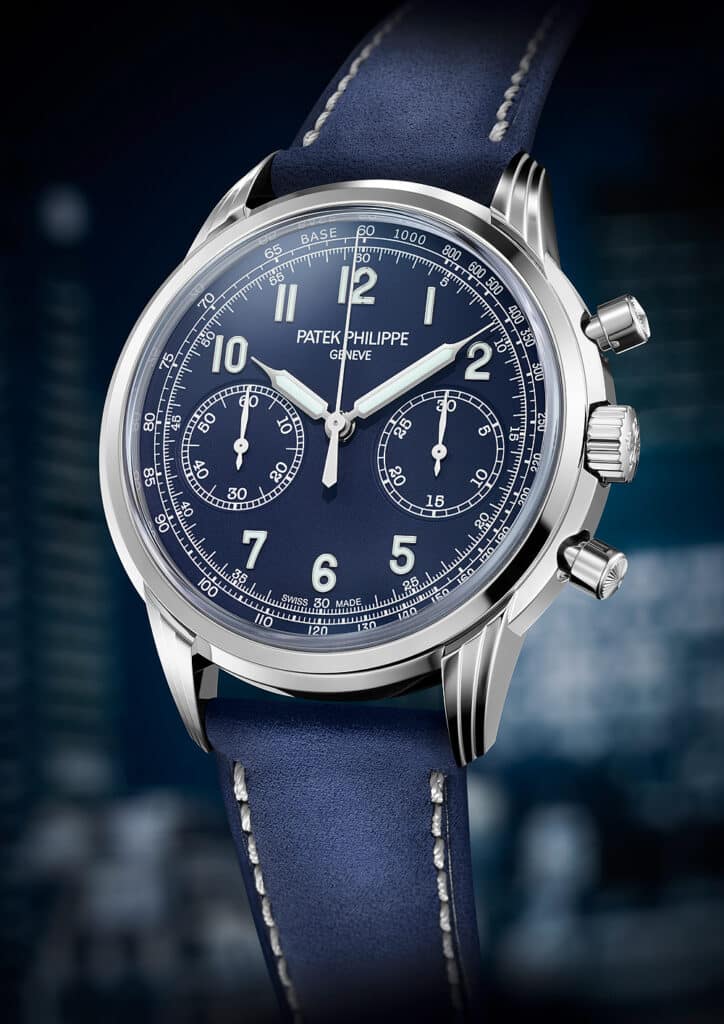
Chronometer: Not to be confused with a chronograph, a chronometer is a very accurate watch that deviates less than a handful of seconds each day. Chronometers may have complications as long as they still meet the accuracy criteria. See C.O.S.C below for more information.
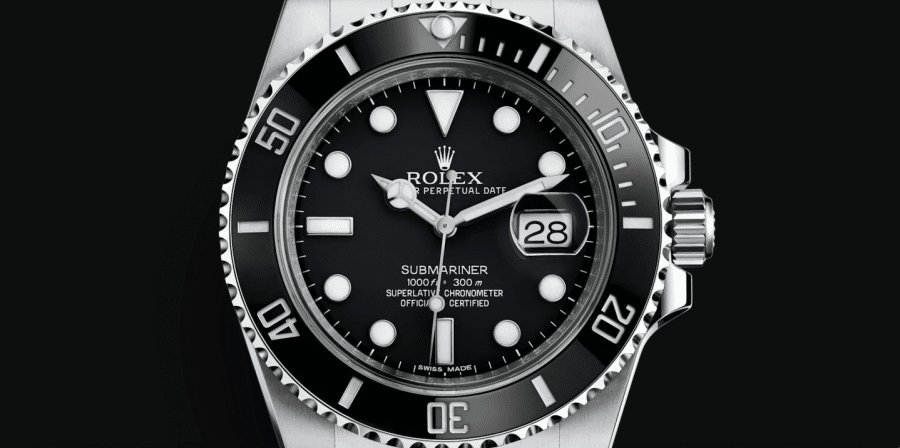
Chronoscope: Unline the chronograph, which records elapsed time in minute and sometimes hour totalizers, a chronoscope shows you the elapsed time after you activate and stop its timing functions, but it does not record it in minutes or hours on a sub-dial or totalizer.
Clasp: The buckle that secures the watch to the wrist.
Cocktail Watch: A women’s or men’s dressy watch designed for formal attire to be worn as a watch, or piece of jewelry.
Coin Edge: A finish that resembles the edge of a coin, usually on the side of a case, or the bezel.
Coke Bezel: A black and red bezel on a Rolex GMT watch. See also Pepsi Bezel.
Column Wheel: A rounded ratchet design that looks like a turret in some chronograph movements. The “wheel” has several large teeth that engage other mechanisms to start, stop and reset the chronograph. Column wheel chronographs were once common in the vintage era but were mostly replaced by less expensive designs. Today however column wheel designs are common in high-end chronographs and they are known for their smooth transactions between the various modes.
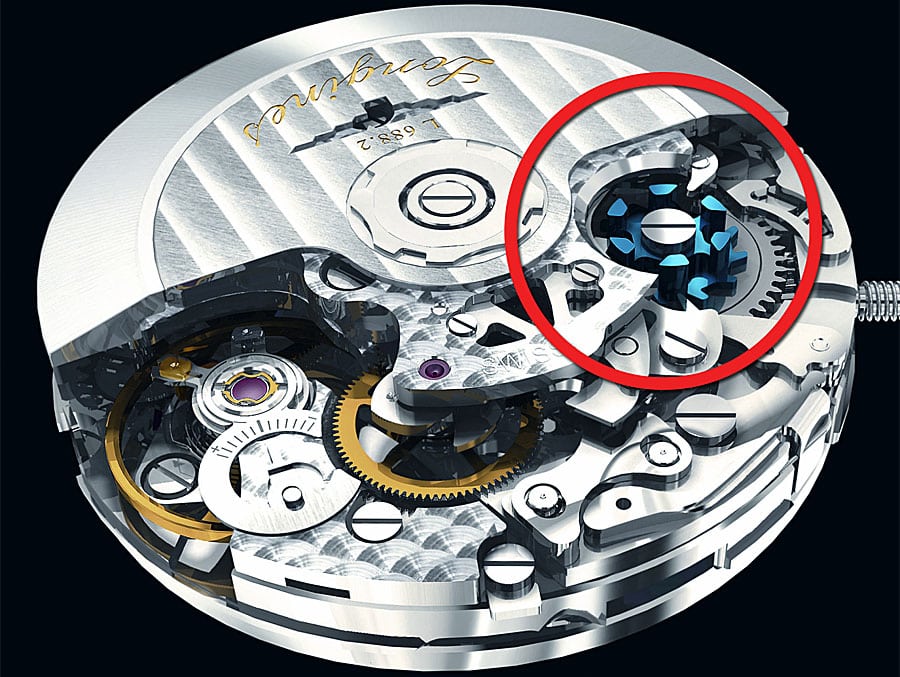
Complications: Simply put, these are functions on a wristwatch. So a chronograph, a calendar, alarm and a moon phase indicator are examples of complications.
Compass Bezel: A bezel that has a compass chapter on it to aid in navigation.
Composite Case: This refers to a case made with a blend of different materials that may include carbon fiber, ceramic and other materials.
C.O.S.C.: French for “Control Officiel Suisse des Chronometres.” This is the organization that awards the coveted certificates of accuracy after stringent and lenghty movement tests. The manufacturer must submit their movements for the tests, and not all choose to do so. Rolex receives more C.O.S.C. certificates than any other watchmaker. Omega usually has the second highest number.
Crown: The winding knob on the case, usually at the “3” position that is used to wind or set the watch. Most moderns crowns are signed with the manufacturer logo. Vintage model crowns are frequently unsigned or are replaced after many decades of wear.
Crown Guard: A case design in which the crown in protected from impact by symmetrical case protrusions on top and bottom.
Crown Position: This refers to:
1. The position of the crown for certain functions, such as winding the watch (resting position), setting the date (second position on calendar models), and setting the time (last position).
2. The position of the crown during time testing for accuracy. The crown may be up, down, left or right during testing.
Crystal: The see-through cover that protect the dial. Crystals were made of glass and plastic in the past. Most today are scratch-resistant synthetic sapphire.
Curvex: The term Curvex was first given by American manufacturer Gruen to their curved rectangular wristwatch cases that curved to hug the wearer’s wrist. The term may be use generically to describe any curved or “banana” case.
Cyclops: The magnifying glass above the date on many Rolex references.
DLC: An acronym for Diamond Like Coating. DLC Coated cases are considered tough and attractive designs on men’s wristwatches.
Dauphine Hands: A very popular vintage style of analog hands used by most manufacturers.
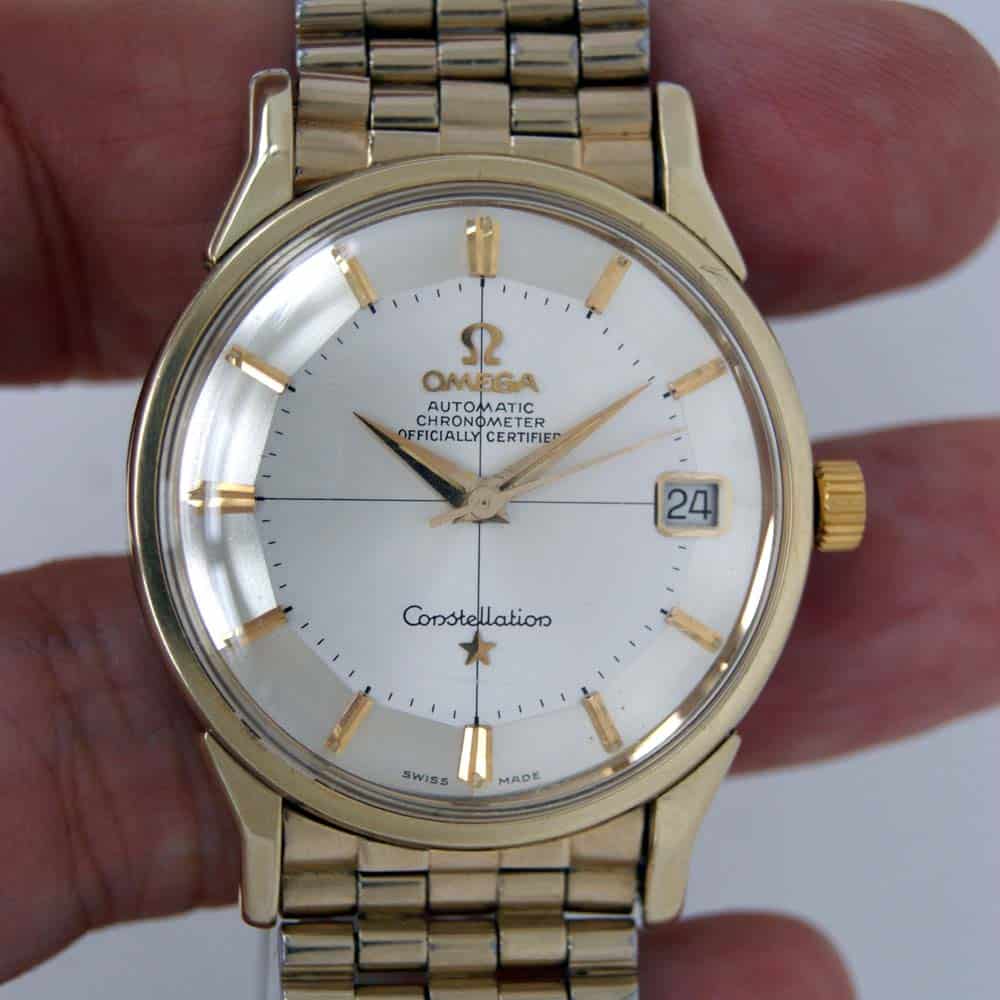
Dead Seconds: (AKA Jumping Seconds) An advanced and rare complication that causes the seconds hand on a mechanical watch to “tick” once every second, much like a seconds hand on a quartz watch.
Decoration: Generally refers to special machining or decoration on the movement, such as on the bridges and rotor.
Deployant Clasp: (AKA Deployment Clasp) a metallic clasp system that is attached to a strap or a band. The user can open and close this clasp quickly and securely since it does not have a loose end. Thus the watch fits on the wrist as you would fit a common bracelet watch.
Dial: The “face” of the watch that contains the hands and the other displays.
Diapal: A patent term by German manufacturer Sinn that is short for a “Diamond Pallet,” a design that replaces the typical Ruby Pallet in some of their wristwatches.
Diver Extension: A hidden extension inside the bracelet’s clasp that the user extends so the wristwatch can fit over a diving wetsuit.. All modern Rolex Submariner bracelets have this feature.
Diving Watch: A watch designed for underwater activities. Most diving watches are rated to at least 10 BARS (300 feet) and have a timing bezel, such as the Rolex Submariner or the modern Omega Seamaster.
Domed Crystal: Most vintage timepieces have domed crystals made out of acrylic. But some modern pieces may emulate this design and may also have domed crystals.
Double Chronograph: This is a rarely used English transaction of the German Doppelchronograph, which describes a Rattrapante or a Split Second Chronograh.
Dressy Watch: An elegant watch that is conservatively designed without busy bezels or other sporty elements.
Ebauche: An unfinished movement made and sold by a third party. Ebauches are usually finished and decorated by the manufacturers that use them in their wristwatches.
Elapsed Time: The recorded time in seconds, minutes and sometime hours that has elapsed since a chronograph was activated. Most chronographs record the minutes and hours in sub-dials. Elapsed time could also be read in minutes via a rotatable bezel.
Engine Turning: A mechanical process that produces uniform patterns such as bezel and case finishes or a dial guilloche.
Error Dial: This refers to rare and erroneously finished dials that may become collector favorites.
Escapement: The mechanism fitted between the gear train and the oscillating balance system to allow the transfer of regulated power to the gear train.
ETA Movement: ETA is Switzerland’s best-known manufacturer of movements that are used by a wide spectrum of brand names. ETA makes some of the most iconic and reliable movements of the market today, such as the Valjoux 7750 chronograph series and many others.

